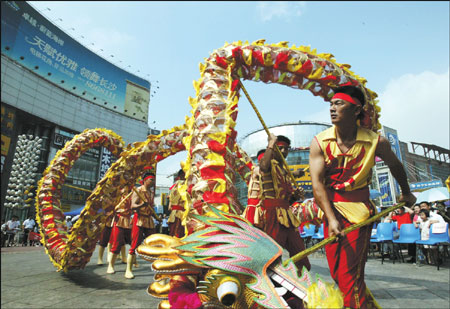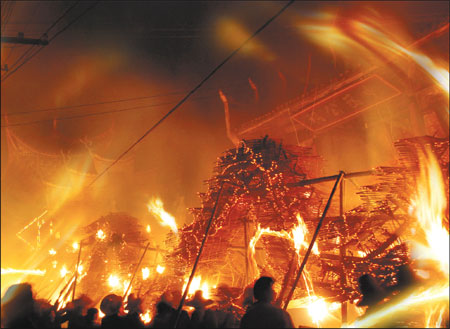 |
| As farmers perform a dragon dance in the provincial capital Changsha, urban residents of the modern metropolis enjoy the spectacular show in its original form. |
In the daytime it is called the "color dragon" because it is wrapped in colorful clothes. Three performers carry a dragon on a parade through the streets and alleys and finally arrive at the square in front of the mausoleum where many performers compete.
At night they turn into "fire dragons" because the carriers set them alight. People dance with them until the dragons are burned to ash.
Sun also recalled the nine-dragons dance in Pingjiang, which was on the first list of China's intangible cultural heritage. It could be the most complicated dragon-worship activity in the nation involving the most detailed and meticulous procedures.
A set of standards governs the opening of the altar, the arrangement of sacrifices, prayers to the dragon god and the planning of parade routes, as well as requiring an oath from performers. The head performers need to "activate" the dragons by painting on their eyeballs before the ritual begins.
 |
| Dancing with incense dragons on fire requires great skill and courage, although performers sometimes wear fire-resistant apparel. |
The dragon is also the totem of the Miao ethnic people in western Hunan.
According to Sun, the dragon is placed alongside the god of lightening and ancestors when the local Miao offer sacrifices.
Because the god of lightening is not always kind to the dragon, locals ask the god to be friendlier so that the dragon can do his job well.
We recommend:
